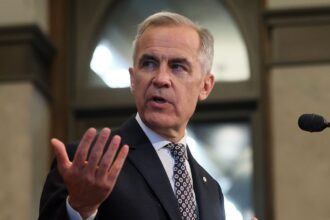As Canadians embrace the warmer temperatures of June, healthcare professionals across the country are ramping up efforts to spotlight a critical health issue that affects thousands each year. June marks Stroke Awareness Month in Canada, a nationwide initiative aimed at educating the public about the warning signs, prevention strategies, and latest treatments for this potentially devastating medical emergency.
“Every minute counts when someone is experiencing a stroke,” explains Dr. Melissa Chen, neurologist at Toronto General Hospital. “During Stroke Awareness Month, we’re focusing on ensuring Canadians can recognize symptoms quickly and take immediate action, which can mean the difference between recovery and long-term disability.”
Stroke remains the third leading cause of death in Canada and a primary cause of adult disability. According to the Heart and Stroke Foundation, approximately 50,000 Canadians suffer a stroke annually—roughly one every 10 minutes. Despite these sobering statistics, public awareness campaigns have contributed to a gradual decline in stroke mortality rates over the past decade.
This year’s campaign places special emphasis on prevention strategies that can significantly reduce stroke risk. Healthcare providers are highlighting the importance of managing high blood pressure—the single most significant controllable risk factor—through regular monitoring, medication adherence, and lifestyle modifications.
“We’ve made remarkable progress in acute stroke care,” notes Dr. James Wilson, director of the Canadian Stroke Network. “But the most effective stroke is the one we prevent entirely. Simple measures like maintaining healthy blood pressure, reducing sodium intake, staying physically active, and avoiding smoking can dramatically lower risk.”
The campaign also addresses concerning trends showing strokes affecting younger populations. Recent data from the Public Health Agency of Canada indicates a 13% increase in stroke hospitalizations among adults under 50 over the past five years.
“We’re seeing alarming increases in stroke among younger Canadians,” says Sarah Thompson, spokesperson for the Heart and Stroke Foundation. “Contributing factors include rising rates of obesity, diabetes, and hypertension in younger demographics, along with increased stress levels and sedentary lifestyles.”
Across Canada, hospitals and community health centers are hosting free blood pressure screenings, risk assessment clinics, and educational workshops throughout June. Virtual seminars addressing stroke prevention in diverse communities are also being offered in multiple languages to reach immigrant populations who may face higher risks.
The FAST acronym—Face drooping, Arm weakness, Speech difficulties, Time to call emergency services—remains a centerpiece of public education efforts. Research suggests that widespread knowledge of these warning signs has improved emergency response times and treatment outcomes nationwide.
Technology is playing an increasingly vital role in stroke prevention and recovery. New mobile applications developed by Canadian researchers help monitor key risk factors and provide personalized prevention strategies, while telehealth initiatives are expanding access to specialized stroke care in rural communities.
For stroke survivors like 42-year-old Ottawa resident Michael Tran, awareness campaigns represent a vital opportunity to share lived experiences. “Before my stroke, I ignored warning signs like occasional numbness and severe headaches,” Tran recalls. “If I’d recognized what was happening and sought help immediately, my recovery journey might have been much different.”
As Stroke Awareness Month continues, health authorities emphasize that prevention efforts require ongoing attention beyond June. With stroke-related healthcare costs exceeding $3.6 billion annually in Canada, the economic impact extends far beyond medical expenses to include lost productivity and caregiver burden.
As we navigate through this important health observance, perhaps the most crucial question remains: How can each of us incorporate stroke prevention strategies into our daily lives not just during awareness month, but as a permanent commitment to our long-term health?
























